| Listing 1 - 10 of 17 | << page >> |
Sort by
|
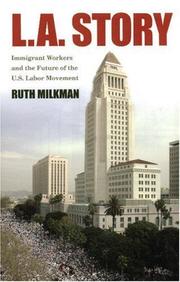
ISBN: 0871546353 9781610443968 1610443969 9780871546357 0871546345 9780871546340 Year: 2006 Publisher: New York, N.Y. R. Sage Foundation
Abstract | Keywords | Export | Availability | Bookmark
 Loading...
Loading...Choose an application
- Reference Manager
- EndNote
- RefWorks (Direct export to RefWorks)
Foreign workers --- Travailleurs étrangers --- Labor unions --- Organizing --- Syndicalisation --- Alien labor --- Aliens --- Foreign labor --- Guest workers --- Guestworkers --- Immigrant labor --- Immigrant workers --- Migrant labor (Foreign workers) --- Migrant workers (Foreign workers) --- Employees --- Employment --- Noncitizen labor --- Noncitizens
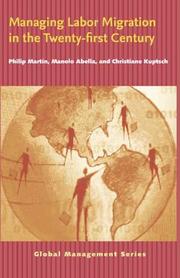
ISBN: 9780300109047 0300109040 9786611722463 1281722464 0300129963 9780300129960 9781281722461 Year: 2006 Publisher: New Haven
Abstract | Keywords | Export | Availability | Bookmark
 Loading...
Loading...Choose an application
- Reference Manager
- EndNote
- RefWorks (Direct export to RefWorks)
Why have ninety million workers around the globe left their homes for employment in other countries? What can be done to ensure that international labor migration is a force for global betterment? This groundbreaking book presents the most comprehensive analysis of the causes and effects of labor migration available, and it recommends sensible, sustainable migration policies that are fair to migrants and to the countries that open their doors to them. The authors survey recent trends in international migration for employment and demonstrate that the flow of authorized and illegal workers over borders presents a formidable challenge in countries and regions throughout the world. They note that not all migration is from undeveloped to developed countries and discuss the murky relations between immigration policies and politics. The book concludes with specific recommendations for justly managing the world's growing migrant workforce.
Foreign workers --- Travailleurs étrangers --- Government policy --- Politique gouvernementale --- Foreign workers. --- Industry. --- Business & Economics --- Labor & Workers' Economics --- Government policy. --- Travailleurs étrangers --- Alien labor --- Aliens --- Foreign labor --- Guest workers --- Guestworkers --- Immigrant labor --- Immigrant workers --- Migrant labor (Foreign workers) --- Migrant workers (Foreign workers) --- Employment --- Employees --- E-books --- Noncitizen labor --- Noncitizens --- Foreign workers.. --- Foreign workers -- Government policy.
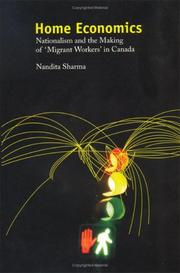
ISBN: 1442675810 9786612023576 1282023578 9781442675810 9781282023574 0802038409 0802048838 9780802048837 9780802038401 Year: 2006 Publisher: Toronto
Abstract | Keywords | Export | Availability | Bookmark
 Loading...
Loading...Choose an application
- Reference Manager
- EndNote
- RefWorks (Direct export to RefWorks)
"A massive shift has taken place in Canadian immigration since the 1970s: the majority of migrants no longer enter as permanent residents but as temporary migrant workers. In Home Economics, Nandita Sharma shows how Canadian policies on citizenship and immigration contribute to the entrenchment of a system of apartheid where those categorized as 'migrant workers' live, work, pay taxes, and sometimes die in Canada, but are subjected to a legal regime that renders them perennial outsiders in relation to Canadian society."--Jacket
Foreign workers --- Capitalism. --- Globalization. --- Government policy --- Canada --- Emigration and immigration --- Government policy. --- Global cities --- Globalisation --- Internationalization --- Market economy --- Alien labor --- Aliens --- Foreign labor --- Guest workers --- Guestworkers --- Immigrant labor --- Immigrant workers --- Migrant labor (Foreign workers) --- Migrant workers (Foreign workers) --- Employment --- International relations --- Anti-globalization movement --- Economics --- Profit --- Capital --- Employees --- Capitalism --- Globalization --- E-books --- Noncitizen labor --- Noncitizens
Book
ISBN: 9264036296 926403630X Year: 2006 Publisher: Paris : OCDE,
Abstract | Keywords | Export | Availability | Bookmark
 Loading...
Loading...Choose an application
- Reference Manager
- EndNote
- RefWorks (Direct export to RefWorks)
Emigration and immigration --- Foreign workers --- OECD countries --- Alien labor --- Aliens --- Foreign labor --- Guest workers --- Guestworkers --- Immigrant labor --- Immigrant workers --- Migrant labor (Foreign workers) --- Migrant workers (Foreign workers) --- Employees --- Immigration --- International migration --- Migration, International --- Population geography --- Assimilation (Sociology) --- Colonization --- Employment --- OECD member countries --- Organisation for Economic Co-operation and Development countries --- Noncitizen labor --- Noncitizens
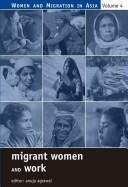
ISBN: 9352802640 9352805186 9789352805181 0761934561 076193457X 8178296063 8178296071 9780761934561 9780761934578 9788178296067 9788178296074 Year: 2006 Volume: 4 Publisher: New Delhi Thousand Oaks, Calif. London Sage Publications
Abstract | Keywords | Export | Availability | Bookmark
 Loading...
Loading...Choose an application
- Reference Manager
- EndNote
- RefWorks (Direct export to RefWorks)
Papers presented at the International Conference on Women and Migration in Asia, held at New Delhi in December 2003.
Women --- Foreign workers, Asian. --- Women migrant labor --- Migrant women labor --- Migrant women workers --- Women migrant workers --- Migrant labor --- Alien labor, Asian --- Asian foreign workers --- Human females --- Wimmin --- Woman --- Womon --- Womyn --- Females --- Human beings --- Femininity --- Employment --- Foreign workers, Asian --- Travailleuses migrantes --- Travailleurs étrangers asiatiques --- Femmes --- Travail à l'étranger
Book
Abstract | Keywords | Export | Availability | Bookmark
 Loading...
Loading...Choose an application
- Reference Manager
- EndNote
- RefWorks (Direct export to RefWorks)
The authors empirically examine the determinants of remittance flows at the cross-country level. They consider, among other things, the significance of the level of migration, the education level of migrants, and financial sector development in determining remittances. Given the potential endogeneity problems, the migration and financial development variables are instrumented in the estimation. They find that the migration level is the main driver of remittance flows, even after controlling for the endogeneity bias through instrumental variable estimation. The authors also find that the education level of migrants relative to the population in home countries, the size of the economy, and the level of economic development of recipient countries adversely affect remittance flows. While they find the effect of financial sector development to be positive, its significance is not strongly supported in their analysis.
Debt Markets --- Developing Countries --- Finance and Financial Sector Development --- Foreign Direct Investment --- Government Policies --- Health, Nutrition and Population --- Home Countries --- Household Surveys --- Macroeconomics and Economic Growth --- Migrant --- Migrant Workers --- Migrants --- Migration --- Number of Migrants --- Official Development Assistance --- Policy --- Policy Implications --- Policy Research --- Policy Research Working Paper --- Population --- Population Policies --- Progress --- Recipient Countries --- Remittance --- Remittances
Book
Abstract | Keywords | Export | Availability | Bookmark
 Loading...
Loading...Choose an application
- Reference Manager
- EndNote
- RefWorks (Direct export to RefWorks)
The authors empirically examine the determinants of remittance flows at the cross-country level. They consider, among other things, the significance of the level of migration, the education level of migrants, and financial sector development in determining remittances. Given the potential endogeneity problems, the migration and financial development variables are instrumented in the estimation. They find that the migration level is the main driver of remittance flows, even after controlling for the endogeneity bias through instrumental variable estimation. The authors also find that the education level of migrants relative to the population in home countries, the size of the economy, and the level of economic development of recipient countries adversely affect remittance flows. While they find the effect of financial sector development to be positive, its significance is not strongly supported in their analysis.
Debt Markets --- Developing Countries --- Finance and Financial Sector Development --- Foreign Direct Investment --- Government Policies --- Health, Nutrition and Population --- Home Countries --- Household Surveys --- Macroeconomics and Economic Growth --- Migrant --- Migrant Workers --- Migrants --- Migration --- Number of Migrants --- Official Development Assistance --- Policy --- Policy Implications --- Policy Research --- Policy Research Working Paper --- Population --- Population Policies --- Progress --- Recipient Countries --- Remittance --- Remittances
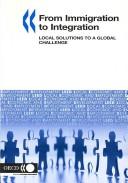
ISBN: 128174719X 9786611747190 926402896X 9264028951 9789264028951 Year: 2006 Publisher: Paris : OECD,
Abstract | Keywords | Export | Availability | Bookmark
 Loading...
Loading...Choose an application
- Reference Manager
- EndNote
- RefWorks (Direct export to RefWorks)
The integration of immigrants at the local level is a topic of significant interest for OECD countries. The growing importance of the knowledge economy means that the battle for talent is becoming as important as the battle for inward investment, and skilled migrants can offer a significant comparative advantage to local labor markets, as long as their potential is harnessed. Unskilled migrants are also in demand, particularly where rising living costs make lower paid jobs unattractive to the native population, and where demographic change and population movement combine to reduce the self-sufficiency of local labor markets. For the potential advantages of migration to be maximized, however, it is crucial that immigration is accompanied by integration, that is, effective mechanisms for ensuring immigrants are effectively incorporated into local labor markets. Paradoxically, at the same time that migration is increasing in global importance, there is worrying evidence that integration results do not seem to be as favorable in a number of countries as they were in the past.--Publisher summary.
Foreign workers --- Manpower policy --- Government policy --- OECD countries --- Emigration and immigration --- Government policy. --- Employment policy --- Human resource development --- Labor market --- Labor market policy --- Manpower utilization --- Alien labor --- Aliens --- Foreign labor --- Guest workers --- Guestworkers --- Immigrant labor --- Immigrant workers --- Migrant labor (Foreign workers) --- Migrant workers (Foreign workers) --- Employment --- OECD member countries --- Organisation for Economic Co-operation and Development countries --- Labor policy --- Labor supply --- Trade adjustment assistance --- Employees --- Noncitizen labor --- Noncitizens
Book
ISBN: 0821366475 0821366483 9780821366479 1280503505 9786610503506 Year: 2006 Publisher: Washington, DC : World Bank,
Abstract | Keywords | Export | Availability | Bookmark
 Loading...
Loading...Choose an application
- Reference Manager
- EndNote
- RefWorks (Direct export to RefWorks)
Network diasporas are but the latest bridge connecting developing economy insiders, with their risk-mitigating knowledge and connections, to outsiders in command of technical know-how and investment capital. This book examines the interaction of expatriate talent with institutions in expatriates' countries of origin in an attempt to make the potential of diasporas and their knowledge a reality. The question of how to trigger and sustain such a virtuous cycle is a central concern of this book. The focus is on the ""how to"" details of how to design effective diaspora networks and transform
Labour market --- Economic conditions. Economic development --- International economic relations --- Developing countries --- Foreign workers. --- Human capital. --- Brain drain. --- Employment in foreign countries. --- Emigration and immigration --- Human assets --- Human beings --- Human resources --- Capital --- Labor supply --- Alien labor --- Aliens --- Foreign labor --- Guest workers --- Guestworkers --- Immigrant labor --- Immigrant workers --- Migrant labor (Foreign workers) --- Migrant workers (Foreign workers) --- Employees --- Employment, International --- Employment, Overseas --- Foreign employment --- International employment --- Overseas employment --- Working abroad --- Working overseas --- Vocational guidance --- Economic aspects. --- Economic value --- Employment --- Noncitizen labor --- Noncitizens
Book
ISBN: 9264025367 9264025359 Year: 2006 Publisher: Paris : OECD,
Abstract | Keywords | Export | Availability | Bookmark
 Loading...
Loading...Choose an application
- Reference Manager
- EndNote
- RefWorks (Direct export to RefWorks)
Diese erste Ausgabe des Internationalen Migrationsausblicks analysiert die jüngsten Trendentwicklungen im Bereich der Wanderungsbewegungen und -politik in allen OECD-Ländern. Erstmals enthält der Bericht für die meisten OECD-Länder auch harmonisierte Statistiken über die langfristigen internationalen Zuwanderungsströme. Unterstrichen werden dabei die wachsende Bedeutung der Zuzüge aus Russland, der Ukraine, China und Lateinamerika sowie die zunehmende Feminisierung der Migrationsströme.Diese Ausgabe spiegelt das wachsende Interesse der Mitgliedsländer an der Anwerbung hoch qualifizierter Zuwanderer mit Hilfe von Auswahlverfahren sowie der befristeten, häufig saisonalen Beschäftigung gering qualifizierter Migranten wider. Das Schwergewicht liegt dabei insbesondere auf Maßnahmen für eine bessere Steuerung der Migrationsströme, speziellen Integrationsmaßnahmen für Neuzuwanderer, die von vorgeschriebenen Sprachkursen hin zu arbeitsplatzorientierten Initiativen reichen, sowie auf der Verstärkung der Maßnahmen zur Bekämpfung der Diskriminierung und Förderung der Vielfalt. Die Veröffentlichung enthält außerdem: • Zwei Sonderkapitel, die aktuellen Themen gewidmet sind. Das erste behandelt die Frage der Steuerung der Migrationszuflüsse durch Quoten und Plafonds und evaluiert die Effizienz entsprechender Instrumente. Das zweite analysiert die Wechselbeziehungen zwischen Migration, Rücküberweisungen und wirtschaftlicher Entwicklung der Entsendeländer aus einem anderen Blickwinkel. • Länderbeiträge, diesmal in neuer Form, die die jüngsten Entwicklungen bei Migrationsbewegungen und -politik beschreiben und anhand neu gestalteter standardisierter Tabellen veranschaulichen. • Einen statistischen Anhang mit den neuesten Daten über Ausländer und im Ausland geborene Personen sowie über Migrationsströme und Einbürgerungen.
Emigration and immigration -- Statistics. --- Foreign workers -- OECD countries -- Statistics. --- OECD countries -- Emigration and immigration -- Statistics. --- Political Science --- Law, Politics & Government --- Immigration & Emigration --- Emigration and immigration --- Foreign workers --- OECD countries --- Alien labor --- Aliens --- Foreign labor --- Guest workers --- Guestworkers --- Immigrant labor --- Immigrant workers --- Migrant labor (Foreign workers) --- Migrant workers (Foreign workers) --- Immigration --- International migration --- Migration, International --- Employment --- OECD member countries --- Organisation for Economic Co-operation and Development countries --- Employees --- Population geography --- Assimilation (Sociology) --- Colonization --- Noncitizen labor --- Noncitizens
| Listing 1 - 10 of 17 | << page >> |
Sort by
|

 Search
Search Feedback
Feedback About UniCat
About UniCat  Help
Help News
News